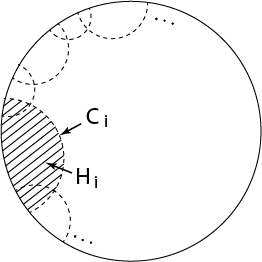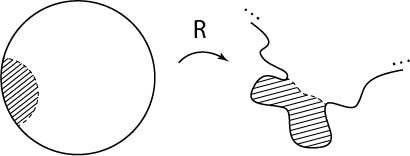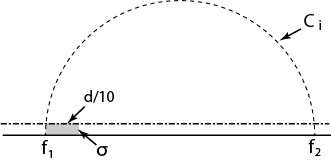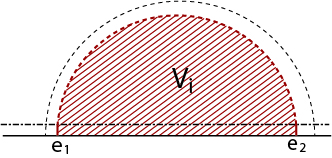This is a non-technical post about how I started off trying to prove a lemma and ended up painting this:
One of my favorite books of all time is Thurston‘s ‘Geometry and Topology of 3-manifolds‘ (and I just can’t resist to add here, Thurston, who happen to be my academic grandfather, is in my taste simply the coolest mathematician on earth!) Anyways, for those of you who aren’t topologists, the book is online and I have also blogged about bits and parts of it in some old posts such as this one.
I still vividly remember the time I got my hands on that book for the first time (in fact I had the rare privilege of reading it from an original physical copy of this never-actually-published book, it was a copy on Amie‘s bookshelf, which she ‘robbed’ from Benson Farb, who got it from being a student of Thurston’s here at Princeton years ago). Anyways, the book was darn exciting and inspiring; not only in its wonderful rich mathematical content but also in its humorous, unserious attitude — the book is, in my opinion, not an general-audience expository book, but yet it reads as if one is playing around just to find out how things work, much like what kids do.
To give a taste of what I’m talking about, one of the tiny details which totally caught my heart is this page (I can’t help smiling each time when flipping through the book and seeing the page, and oh it still haunts me >.<):
This was from the chapter about Kleinian groups, when the term ‘train-track’ was first defined, he drew this image of a train(!) on moving on the train tracks, even have smoke steaming out of the engine:
To me such things are simply hilarious (in the most delightful way).
Many years passed and I actually got a bit more into this lamination and train track business. When Dave asked me to ‘draw your favorite maximal train track and test your tube lemma for non-uniquely ergodic laminations’ last week, I ended up drawing:
Here it is, a picture of my favorite maximal train track, on the twice punctured torus~! (Click for larger image)
Indeed, the train is coming with steam~
Since we are at it, let me say a few words about what train tracks are and what they are good for:
A train track (on a surface) is, just as one might expect, a bunch of branches (line segments) with ‘switches’, i.e. whenever multiple branches meet, they must all be tangent at the intersecting point, with at least one branch in each of the two directions. By slightly moving the switches along the track it’s easy to see that generic train track has only switches with one branch on one side and two branches on the other.
On a hyperbolic surface , a train track is maximal if its completementry region is a disjoint union of triangles and once punctured monogons. i.e. if we try to add more branches to a maximal track, the new branch will be redundant in the sense that it’s merely a translate of some existing branch.
As briefly mentioned in this post, train tracks give natural coordinate system for laminations just like counting how many times a closed geodesic intersect a pair of pants decomposition. To be slightly more precise, any lamination can be pushed into some maximal train track (although not unique), once it’s in the track, any laminations that’s Hausdorff close to it can be pushed into the same track. Hence given a maximal train track, the set of all measured laminations carried by the train track form an open set in the lamination space, (with some work) we can see that as measured lamination they are uniquely determined by the transversal measure at each branch of the track. Hence giving a coordinate system on .
Different maximal tracks are of course them pasted together along non-maximal tracks which parametrize a subspace of of lower dimension.
To know more about train tracks and laminations, I highly recommend going through the second part of Chapter 8 of Thurston’s book. I also mentioned them for giving coordinate system on the measured lamination space in the last post.
In any case I shall stop getting into the topology now, otherwise it may seem like the post is here to give exposition to the subject while it’s actually here to remind myself of never losing the Thurston type childlike wonder and imagination (which I found strikingly larking in contemporary practice of mathematics).






















